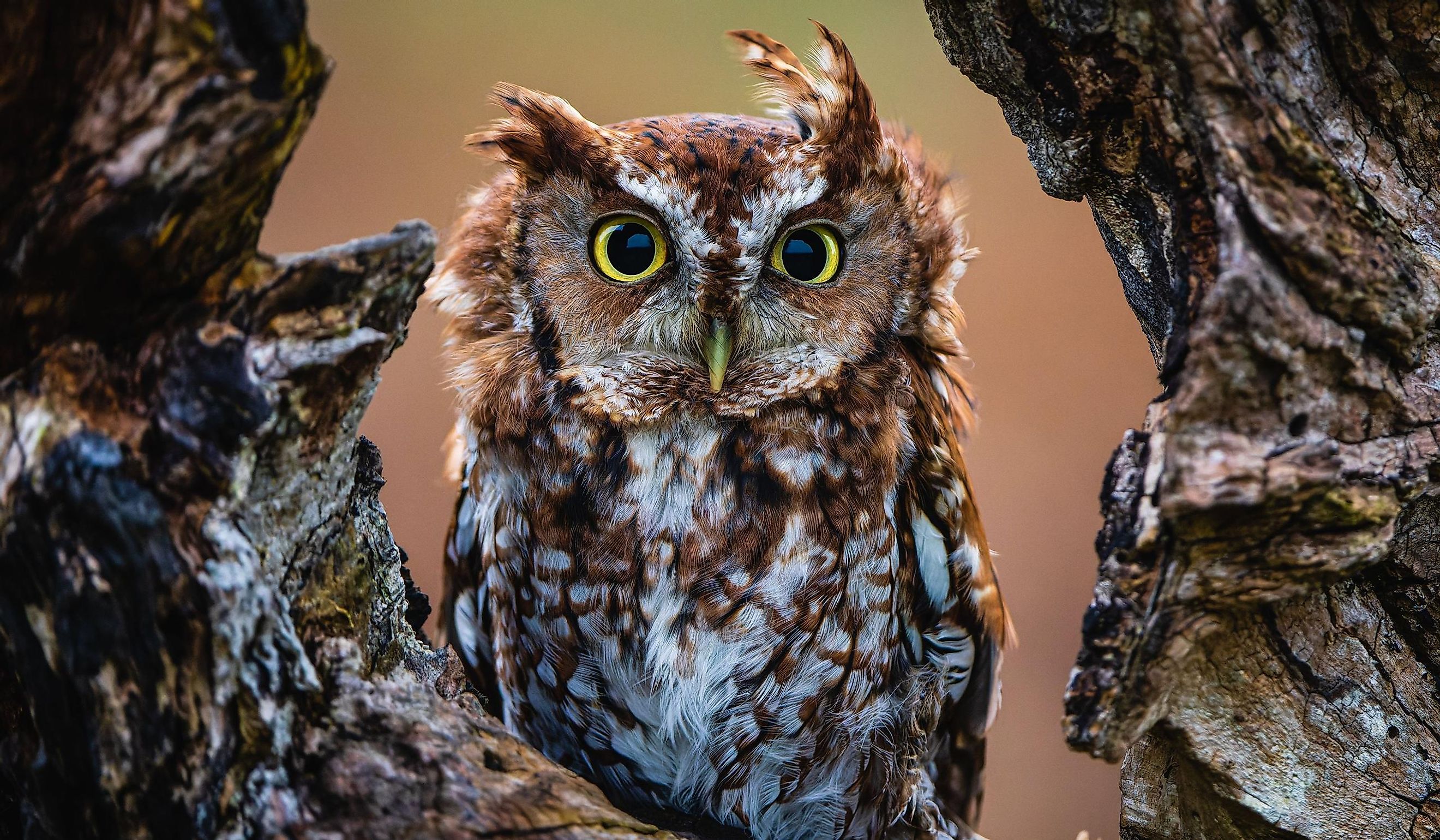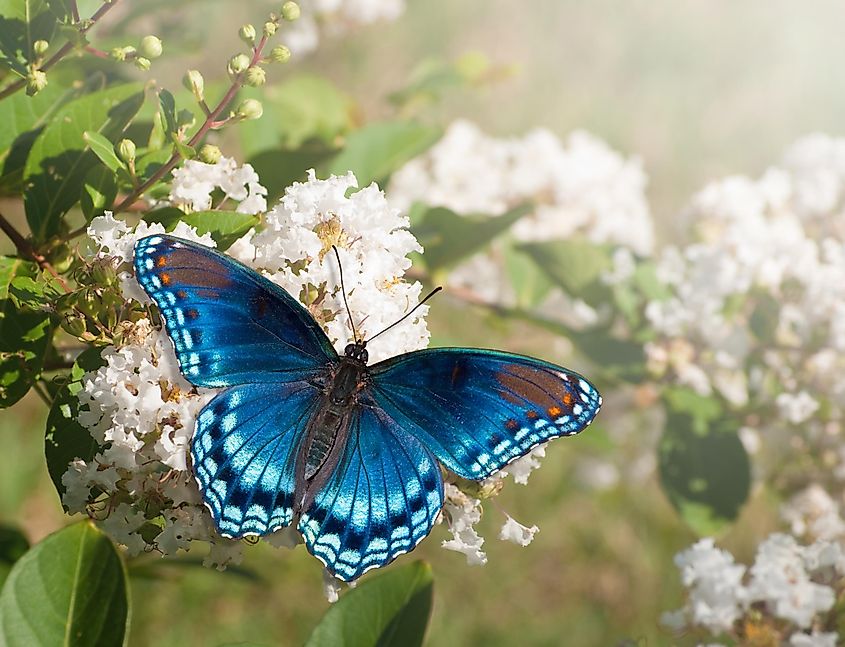
The 12 Most Beautiful Wild Animals In New York
Despite being one of the major population centers of the United States (and in some cases, because of this fact), New York displays enormous biodiversity. The Department of Conservation is hesitant to even wager an exact estimate, but the number of species that live in or migrate through the state is in the tens of thousands. Thanks to the robust wilderness of upstate New York (from the finger lakes to the dense mountain forests), the Atlantic Coast (including its corresponding network of major waterways), and even the artificial sources of food and shelter offered by expanding residential zones, the Empire State has a surprisingly synergistic ecology. While there are reasons to highlight every living creature, this article celebrates twelve of the most beautiful wild animals that New York has to offer.
North American Beaver

The busy beaver (Castor canadensis) is an appropriate state mammal since it mirrors the hustle of New Yorkers. It also played a valuable part in the early economy. North America's largest rodent has water-repellent fur, which makes it suitable for semi-aquatic life, but this same pelt also put a big target on its back during the fur trade. This prolonged period of overhunting (combined with deforestation) nearly destroyed the local beaver population, but thankfully, early 20th-century reintroduction programs have brought this stocky, cuddly, and toothy fellow back to the rivers and wetlands, particularly in the Adirondacks of upstate New York. By building its characteristic dams, thereby resulting in slow-moving ponds, beavers reduce erosion and provide habitats for scores of other creatures.
Eastern Bluebird

The Eastern bluebird (Sialia sialis) was recognized as New York's official bird in 1970. Its radiant plumage and chipper tune symbolize the state's optimistic side. Like the beaver, its Northeastern population dropped dramatically, this time as the farmlands and orchards were steadily converted into residential zones, but also, like the beaver, it has made a comeback after a determined campaign. Thanks to the efforts of the North American Bluebird Society, which included such initiatives as strategic nesting boxes, this small, plump, round-headed, and beautifully-colored thrush is now on the rebound in rural New York. The next time you're in the area, look for the bright blue wings of males (with rust and white-tinted bodies) or the soft-blue feathers of females (who have gray/white/orange-brown bodies).
Nine-Spotted Ladybug

With its shiny orange shell, black and white head, and black spots (you'll never guess how many), the attractive nine-spotted ladybug (Coccinella novemnotata) was elected as New York's state insect in 1989. The ladybug, or lady beetle, was also selected by Delaware, New Hampshire, Massachusetts, Tennessee, Ohio, and North Dakota (popular lady!). This nine-spotted subspecies was the most common in the Northeastern United States until about the 1980s, when it started to decline rapidly. Though the cause is still a mystery, it is thought that the introduction of non-native lady beetles created too much competition in viable habitats. Disease and predation may also have been to blame. Sadly, the nine-spotted ladybug is a rare sight in New York.
Red-Spotted Purple/White Admiral

Another pretty, spotted creature to be honored at the state level is the red-spotted purple/white admiral (Limenitis arthemis) – New York's butterfly. Though there are 1,400 known species of butterflies and moths in the region, the red-spotted white or purple admiral won the day, thanks to a 2008 statewide poll of grade schoolers. With its black-blue, white-banded, red-spotted wings, it is easy to see why it caught the attention of the youth. L. arthemis flies just a few feet off the ground and in short bursts. Otherwise, it can be seen walking along the ground or sunning itself at the tops of trees. This species of butterfly can be found throughout the Great Lakes region and New England – particularly in deciduous woodlands.
Snapping Turtle

The snapping turtle (Chelydra serpentina), New York's state reptile, perhaps embodies the scrappier side of New Yorkers. With that said, snapping turtles (there are five species endemic to North America) are not typically aggressive. They are passive when in water (lakes, ponds, streams, and other slow-moving/shallow, and even urban waterways), which is where they spend most of their lives. When on land, they will often bury themselves in the mud, leaving only their nostrils and eyes in the open air. The powerful snap tends to come out during defensive situations (so leave them be or else watch your fingers!). Snapping turtles are omnivorous, and they will eat recently dead organisms. Amazingly, snapping turtles, which are some of the largest turtles on the continent, live for an average of 30 to 40 years.
Atlantic Striped Bass

This state animal might not be beautiful in the pageantry sense of the term, but it certainly holds a special place in the hearts of New York anglers. The striped bass (Morone saxatilis) is the state (saltwater) fish – an honor it achieved thanks to its ecological role, its recreational and culinary value, and (though recovering from a period of general overfishing) its longstanding regional population. This species has a large body (growing upwards of five feet in length and weighing upwards of 77 pounds) with darkly-hued, horizontal stripes and is plentiful in this part of the Atlantic Coast. In fact, this anadromous species (i.e., like salmon, they swim up freshwater rivers to spawn) is particularly drawn to the Hudson River estuary.
Bald Eagle

Though not specific to New York state, America's national bird, the bald eagle (Haliaeetus leucocephalus), is drawn to the Empire State's plethora of lakes and other waterways (most notably, the St. Lawrence and Hudson Rivers), especially during the winter. Standing between 28 to 43 inches, with a wingspan between 72 to 96 inches, and weighing upwards of 14 pounds, the bald eagle is neck and neck with the golden eagle for largest eagle in the United States (excluding the occasional stateside visitor: Steller's sea eagle), and is also one of the world's largest eagles. Size is one thing, but the bleach-white head and tail feathers, yellow beak, and piercing yellow eyes make this patriotic raptor nothing short of iconic. Despite its universal popularity, the bald eagle struggled greatly in the mid-20th century due to pesticide-related breeding impairments (namely, DDT) and contaminated waterways (eagles are highly sensitive to toxic compounds). To counter the drastic decline, New York had nearly 200 specimens brought in from Alaska. Slowly but surely, the local breeding population has continued to rise since then.
Black Bear

Though ursines are known for swiping picnic baskets, they steer clear of the Big Apple. With that said, bear in mind that black bears (Ursus americanus) do well in upstate New York. If lucky, you may spot the state's second-largest mammal (behind the moose) while out for a hike (hopefully from a safe distance). Black bears actually exist in such healthy numbers that the state issues hunting tags. It is estimated that there are between 6,000 to 8,000 bears in areas open to hunting – and this is a conservative figure. Approximately 50-60% can be found roaming the Adirondack region, 30-35% in the Catskills, and another 10-15% in the Central-Western regions. Established populations have also been tracked in Tug Hill, the Hudson Valley, and the Southern Tier. Transient bears mark even more places on the map, including some semi-rural and urban areas.
Eastern Screech Owl

This short, stocky, and alluring owl is found all across New York, no matter the season. The Eastern screech owl (Megascops asio) has a large head topped with pointed ear tufts, a minimal neck, and a gray and reddish-brown plumage (mixed in a complex pattern) that perfectly resembles bark – helping this bird of prey to blend into the evergreen and deciduous forests of New York (both rural and urban). Often, the only giveaway when roosting in tree cavities is the screech owl's enormous round yellow eyes. With that said, the screech owl is nocturnal and, therefore, more likely to be heard than seen. Though its appearance is undeniably beautiful, its vocalizations might require a different adjective.
Humpback Whale

While the action-packed streets of New York City might deter certain terrestrial wildlife, marine animals have no such reservations. In recent years, more and more humpback whales (Megaptera novaeangliae) have come within view of the world-famous skyline – even swimming into the New York Harbor and Hudson River. These bus-sized beauties (they can grow up to 60 feet in length) are drawn to the region's bountiful supply of menhaden fish, of which they can eat upwards of 3,000 pounds per day in order to fuel their 40-ton bodies. The status of humpback whales is currently under review by the state (but appears to be promising), and at the federal level, the species is classified as Not at Risk. Since they generally live between 80 and 90 years, scientists learn to spot familiar individuals by the unique patterns on the underside of their flukes.
Harbor Porpoise

Another majestic marine mammal known to frolic in the coastal waters near New York is the harbor porpoise (Phocoena phocoena). While other types of dolphins have been spotted, this is the only species of porpoise that is seen on a regular basis in Long Island Sound and the nearby bays, harbors, and estuaries. Unlike some of its cousins, this 5-foot-long, 135 to 170-pound porpoise is quite shy and prefers to travel in pairs or groups of three. As with all marine mammals, the harbor porpoise is a protected species, although it does face continued dangers due to the gillnets, fishing traps, pollution, and underwater noise that comes with the coastal territories. Thankfully, the NOAA Fisheries works to free these animals from entanglement and stranding and continues to study ways to lessen our impact.
Red Fox

The sharp and striking red fox (Vulpes vulpes) is known to roam every county in New York state. So named because of its year-round red coat (which becomes even bolder in the winter), the red fox is a joy to spot in its primary habitats of mixed fields and forest edges and farmlands, but their opportunistic ways (and their efforts to evade growing coyote populations) also lead them (more so in recent years) into the suburbs. The red fox is impressively adaptable – covering much of the Northern Hemisphere and able to subsist on everything from small mammals to nesting birds (and their eggs), reptiles, amphibians, insects, carrion, and even ripening produce.
These twelve beautiful wild animals of New York are significant because of their visceral visual impact, their understated role in the environment, and their place in the region's history. While many of these species are either thriving or have recently rebounded from local extirpation, there are always factors for us to be aware of and mindful to mitigate. New York has large swaths of healthy wilderness, but its large population also inevitably causes habitat destruction, pumps out pollutants, and inadvertently spreads invasive species. With vigilance and continued reverence for animals such as these, New York can be a beacon of biodiversity for generations to come.











